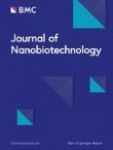
Batteries using inorganic solid electrolytes instead of flammable liquids represent a very promising solution in terms of stability, performance and safety. Unfortunately, most super-ionic inorganic materials exhibit ion diffusion at the level of typical solids. Consequently, only a small number of such materials are considered as potential electrolytes. Intriguingly, these few materials exhibit remarkable rapid diffusion and high conductivity - several orders of magnitude higher than standard solids and comparable to ion diffusion in liquid electrolytes. The cause of this effect has not yet been clarified. Understanding the mechanisms of ion diffusion requires unique experimental and theoretical tools. One can face this challenge exploiting Nuclear Magnetic Resonance (NMR) relaxometry in combination with complementary NMR methods: diffusion and spectroscopy as well as dielectric spectroscopy. The analysis of the results of NMR relaxation experiments conducted as a function of the magnetic field provides unique information about the mechanisms of ion movement and the nature of diffusion processes. Such information cannot be obtained by other means.
More details here:


